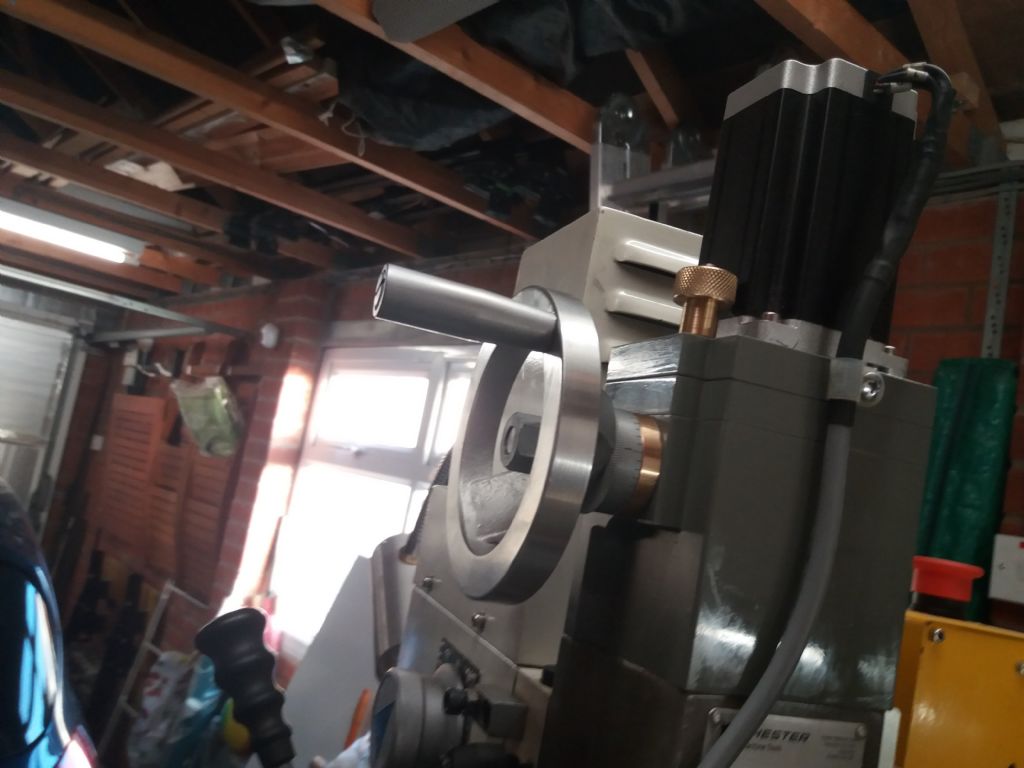Well then, six months down the line before disaster struck! Rightly or wrongly, and opinion seems to differ on here, I am now in the habit of locking the head while shaving metal horizontally.
Just over a week ago I was skimming a piece of aluminium and I inadvertently leaned on the "Down" switch (little aluminium cylinders shown a bit higher up this topic on my control box). The 20mm end mill dug into the workpiece and also managed to mark the top of my lovely, shiny Arc precision vise with a lot of very loud thumping and banging until I gathered myself enough to kill the power. The stepper was powerful enough (9Nm) to overcome the head locks easily and continue to push the head down (28 tooth pulley on stepper, 40 tooth on handwheel). Apart from the mark on the vise there didn't seem to be any further damage done. However when I switched back on to raise the head there was a lot of chattering as the head began to take short, noisy jumps upwards. I was pretty sure I'd smashed a few teeth off the top bevel gears or damaged the leadscrew threads. I removed the drive belt from my stepper motor and tried winding up and down manually. No problem there, it seemed. Taking the top drive box to bits was a chew, as it was during construction with only blind, fingertip access (!) to the hex screws, but at least I could see there was no damage up there.
However, when I went back the next day and reassembled the drive, the stepper motor just flicked and then stopped, and wouldn't work again after that. I thought I'd try it using the controller and driver from the X-axis to see if I'd broken the motor but it then worked perfectly again. I narrowed the problem down to the PWM thingy that @Martin Connelly put me on to (very grateful for his wiring info!) and luckily I'd bought a spare with the rest of the kit so all good again. Except!
Next time I switched on and used the "Up" control, the head started to travel but didn't get very far as the handwheel then popped out of the column! This happened because the lateral pressure of the gear teeth tending to push away from the leadscrew against the handwheel shaft had disengaged the press-fit bearings from the bearing bracket (or Pillow Block as it's named in the equivalent Grizzly parts list). Anyway I solved that by drilling and tapping the bracket and installing two opposing grub screws to bear on the inner bearing's outer race. The outer bevel gear (bronze or brass?) is also an interference fit on its shaft so I drilled that and did the same to it. When I checked the menual I fully expected to see grub screws in there anyway, but no, there aren't any.
Has anyone else had this problem?


Roger Best.















